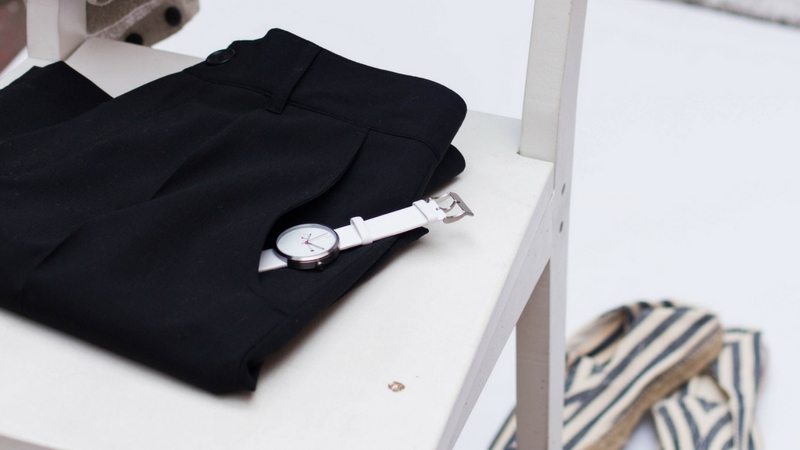Your Best “Uniform”—Workable, Repeatable Outfits
Episode #5 of the course Lazy person’s guide to a perfect wardrobe by Andrea Pflaumer
Albert Einstein and Steve Jobs did it. Novelist Tom Wolfe does it. Simon Cowell, Karl Lagerfeld, and Fran Lebowitz do too. What did—and do—all these people have in common? They wear the same thing every day. Okay, so all of them are men, I’ll give you that. But women also can have a style uniform. For example, Renata Briggman, a real estate officer from Arlington, wears black slacks, black shoes, a grey blazer, and a white shirt every single day. All these people are very successful individuals who spend not a day worrying about what they are going to wear.
There are many advantages to having a uniform. Uniforms free you up for the day’s tasks. They reduce anxiety levels because you don’t have to reinvent yourself every time you get dressed.
The idea of wearing a uniform can be completely abhorrent if you were traumatized by having to wear one for work or school, or if you’re a creative type who loves variety and change. But people who are lazy about their wardrobes are unlikely to love change. And you can still easily bring variety to a uniform.
What Is a Uniform?
A uniform is a repeatable collection of pieces that consistently work well together and that flatter your coloring, style, and body. That description gives you a lot of leeway to be a creative without much brain drain. It’s like a go-to dinner recipe: You’ve done it so many times, you don’t have to think about it.
Regardless of how formal or informal your lifestyle, having at least one—or a few—great uniforms to fall back on will help you feel good about how you look. It’s also useful to have a couple of uniforms for each of your regular life events: work, socializing, exercising, etc.
Basic Guidelines for Creating Your Style Uniforms
Here are a few hints on how to do this. These same criteria can apply to casual, business, and dressy outfits.
Unless you are enamored by lots of color, prints, and flourishes, start with some well-made, good-fitting classic pieces. Not everyone is a Classic archetype, but just about everyone can instantly look pulled together by wearing a few classic-type pieces as a wardrobe foundation.
The classic elements are:
• little embellishment
• solid colors
• mostly dark neutral colors
• simple lines
Your best dark neutrals are determined by your dominant color harmony. (Remember, we are all seasonal combinations, so you can go with what you feel are your primary ones.)
• Black works for Striking Contrast.
• Bright navy works for Lively Bright.
• Medium to dark gray works for Subtle Blended.
• Olive and brown works for Earthy Rich.
You can always add color and variety with accessories, but start with simple neutrals. If you get bored with them, change up the color of your shirt or blouse. Practice swapping out different tops. (This also trains your eye to see the colors that go well with your neutrals.)
Classics don’t have to be made from something like worsted wool. They can be any textile—linen, cotton, natural/synthetic blends/leather, anything—but they should be the best quality you can afford. For example, a classic uniform for someone with an extremely casual lifestyle could be well-made jeans, a tee, and a leather moto jacket. The point is that it’s a simple and repeatable combination.
Learn the styles that look best on you so your uniform is the most flattering for your body. (We’ll talk more about this in Lessons #6 and #8.) Unless you have a great memory, hang these outfits together in your closet or take snapshots of them. Make mental notes of specific pieces you love and why you love them.
In the next lesson, we’ll talk about one of the most important part of looking good in what you wear: proportion.
Recommended book
Share with friends

